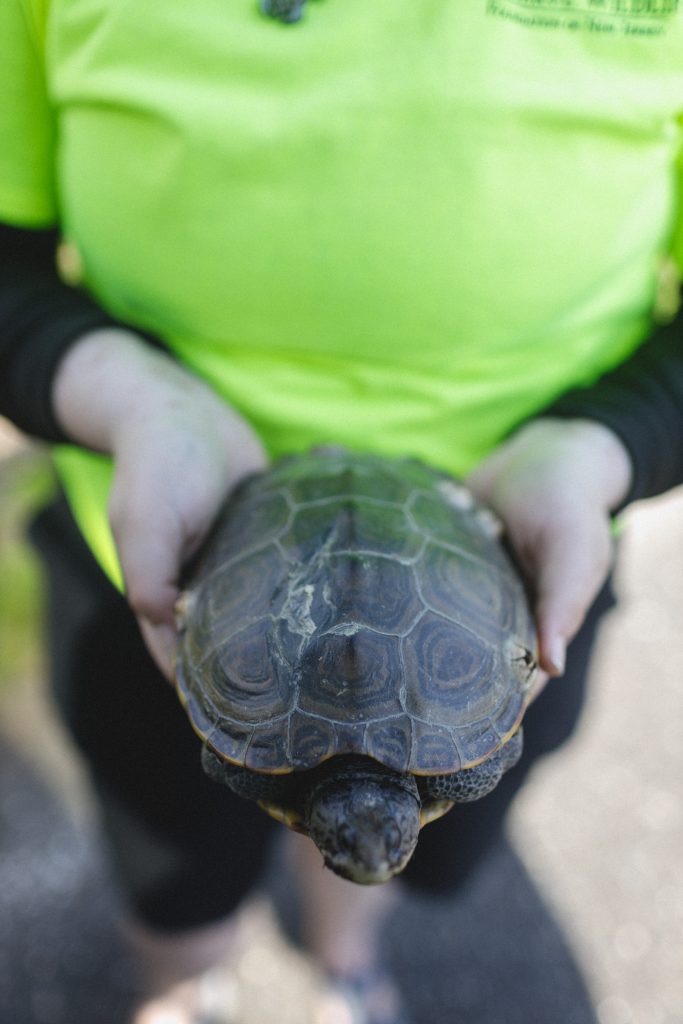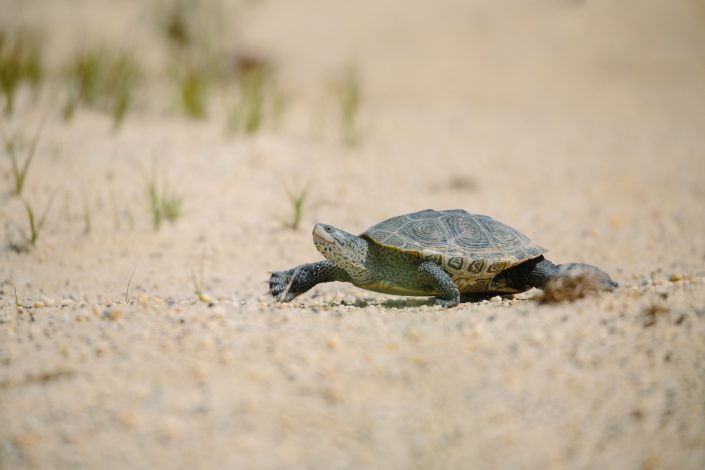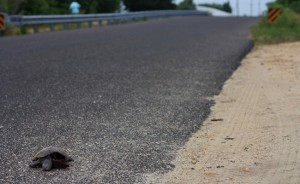UNDER-SERVED SPECIES RECEIVES RECOGNITION IN NEW JERSEY
by Corrine Henn, Assistant Communications Manager
Last week on July 15th, Governor Chris Christie signed a bill into law effectively making it illegal to hunt or harvest diamond terrapin, a species native to New Jersey’s coastal salt marshes. Now legally considered a non-game indigenous species, the terrapin will be subject to all laws and regulations as stated in the Endangered and Nongame Species Conservation Act.

For many, this news is long time coming. Since 2009, Conserve Wildlife Foundation of New Jersey has worked diligently alongside our partners to conserve, research and raise awareness for the plight of the diamond terrapin. The Great Bay Terrapin Project aims to reduce the number of deaths and simultaneously educated the public on the importance of conserving this vital species.
Out of all the threats the terrapin face, including habitat loss, ghost crab traps, and accidental deaths, harvesting of the terrapin has increased in a number of areas around the state as the demand for terrapin (as pets) and terrapin meat grows in overseas markets.
Up until this new legislation, the diamondback terrapin could be legally harvested in New Jersey during the permitted hunting season. Unfortunately, there has never been any formal regulation in place to keep track of just how many were being taken from the wild. All that was required was that the terrapin be caught by hand. However, an incident in 2014 that resulted in the harvesting of near 3,500 terrapins only reaffirmed that something more needed to be done.

For the past two years, the New Jersey Department of Environmental Protection (NJDEP) commissioner Bob Martin signed an administrative order ending the harvesting season early. The culmination of these incidents, along with years of monitoring and studying the terrapin and the ongoing threats they face supported the concerns brought forward in the legislation to Governor Chris Christie.
We have never been able to fully grasp the status of the terrapin population here in New Jersey, but this legislation opens up new opportunities and renewed hope, to those of us not only at CWF but our partners around the state. We hope that this new law will deter those who wish to harvest the terrapin illegally, and that those who do and are caught will be prosecuted.
In the meantime, there are still many ways you can help in protecting this beautiful and unique species.

Learn More:










